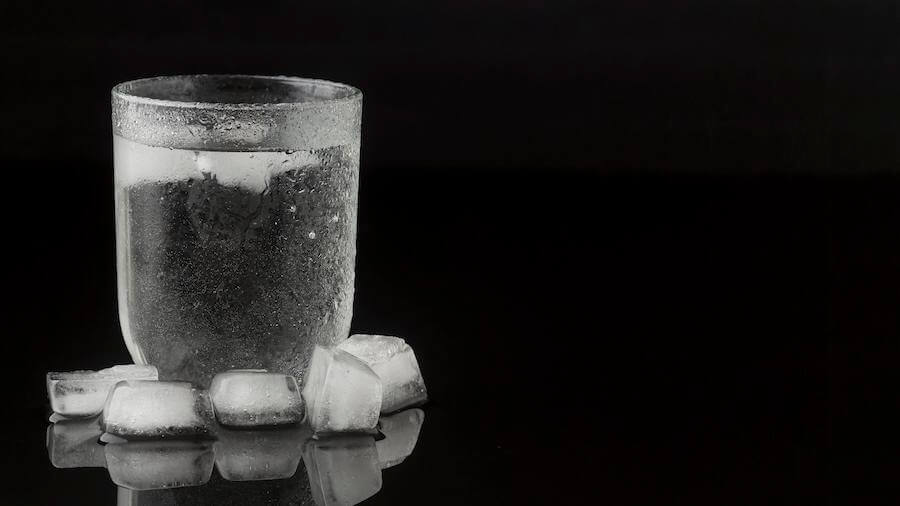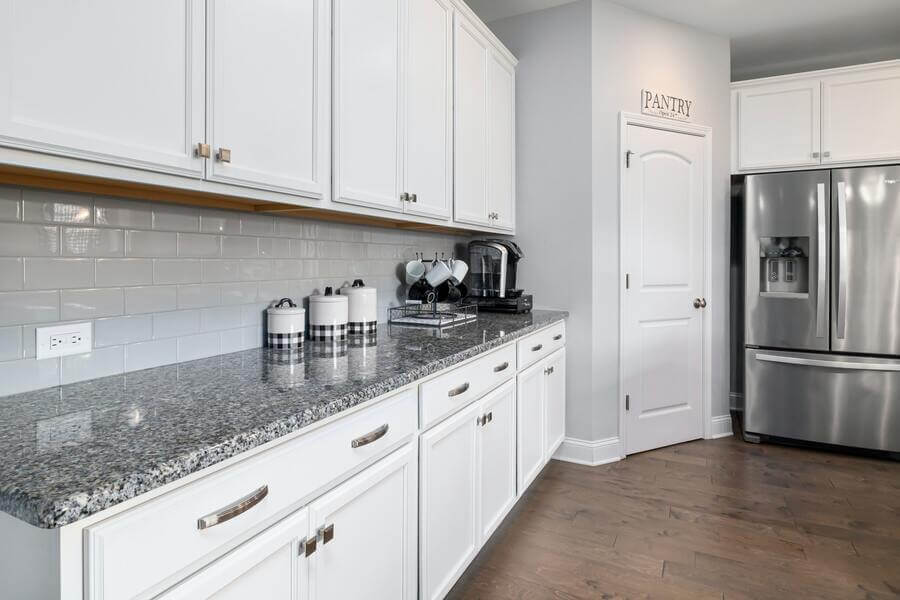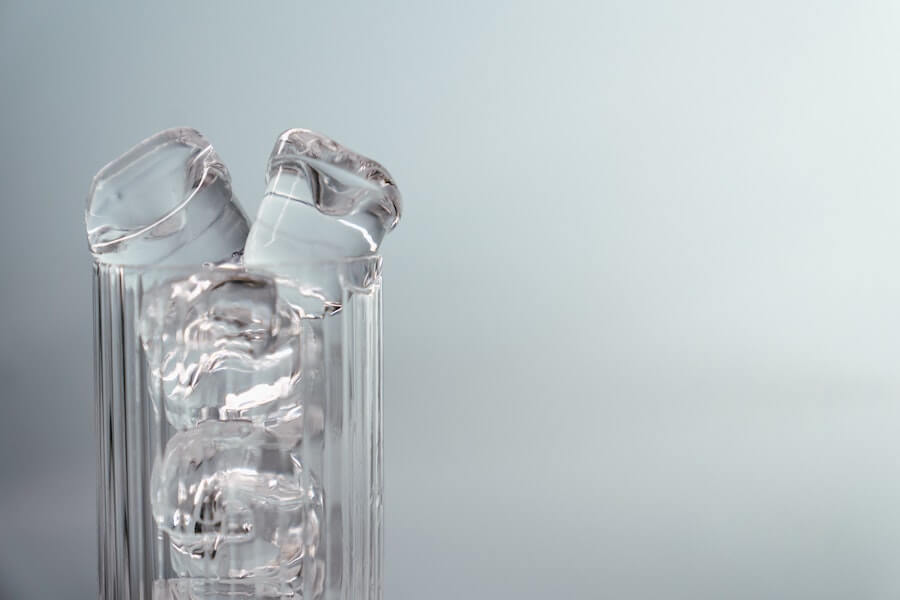Picture this scenario: it’s a scorching summer day, and you only crave a refreshing glass of ice-cold water. You confidently press the button on your refrigerator’s dispenser, expecting a cascade of ice cubes to fill your glass.

But to your dismay, nothing happens. The ice maker remains silent, refusing to produce the much-needed ice.
Frustrating. But you’re not alone.
This frustrating event where the ice maker takes an unscheduled vacation has happened to many homeowners. Some troubleshooting procedures can help you resolve this issue before calling for professional help.
Ice Maker Reset
Sometimes, your ice maker may get stuck or encounter a minor issue that resetting can resolve. To do this, locate your ice maker’s power switch or button, typically found inside the freezer.
Please turn it off, wait a few minutes, and then turn it back on. This action restarts the ice-making process and can often resolve minor glitches without further troubleshooting.
Inspect the Frozen Water Line
A frozen water supply line is a common issue that can prevent your ice maker from receiving water. This happens when the water line leading to the ice maker freezes, blocking water flow.
To check for this, examine the water line in the freezer. You’ll need to thaw the pipe if you notice ice buildup or a frozen section. This can be accomplished by turning off the ice maker and allowing the cable to defrost naturally or using a hair dryer on low heat to expedite the process.
Check for Leaks
Inspecting for leaks in the water supply lines and the ice maker is essential. Leaks can disrupt the ice-making process and potentially cause damage.
Examine the water lines, connections, and the area around the ice maker for any signs of moisture, drips, or puddles. If you find a leak, it should be addressed promptly to prevent further issues and potential water damage.
Check Water Supply
Verifying the water supply to your refrigerator is crucial for proper ice maker function. The water supply valve must be fully open to ensure sufficient water flow to the ice maker. A partially closed valve can significantly restrict water flow, leading to issues.
Additionally, inspect the water line for any kinks or pinches. Even minor obstructions can hinder water flow to the fridge. A transparent and open water supply path keeps the ice maker running smoothly. It’s a simple yet critical step that can prevent joint problems.
Check the Ice Maker Switch
The ice maker switch is a straightforward but vital component for ice production. This switch, typically found inside the freezer, must be in the “on” position for the ice maker to function. If the switch is inadvertently turned off, you can quickly remedy the situation by flipping it back to the “on” position.
This common issue can lead to a sudden lack of ice production. It’s a user-friendly fix that requires no technical expertise and can promptly restore the ice-making process.
Fix the Infrared Sensor
Many modern ice makers use infrared sensors to monitor the ice level in the bin and control ice production. Over time, these sensors can accumulate dust and dirt, interfering with their operation.
To address this, carefully clean the infrared sensor on or near the ice bin. This sensor is typically a small, clear, or black component.
Using a soft, lint-free cloth, gently wipe away any buildup that might obstruct the sensor.
Ensuring that the sensor remains clean and unobstructed is vital for the ice maker to detect when more ice is needed accurately and when the bin is full. Regularly maintaining the infrared sensor is a simple but effective way to keep your ice maker functioning optimally.
Ice Maker Fill Tube
Examine the fill tube that supplies water to the ice maker. Mineral deposits or ice can sometimes accumulate in the fill tube, causing blockages. First, disconnect the refrigerator from the power source to inspect and clear the fill tube.
If you notice any obstructions, gently remove them with a small tool or warm water to melt the ice. A clear fill tube allows water to flow freely to the ice maker, ensuring a consistent ice production process.

Check the Inlet Valve
In case you need to be made aware, the ice maker typically has a separate inlet valve responsible for controlling the water flow to the ice maker. As such, if you suspect issues with your ice maker’s water supply, inspect this valve for proper functioning.
Testing it for continuity with a multimeter can help determine if it’s faulty. If the valve isn’t working correctly, it may need to be replaced. A properly functioning inlet valve ensures the ice maker receives enough water to produce ice effectively.
Check the Filter
The water filter purifies the ice maker and water dispenser water. However, minerals, silt, and pollutants can clog these filters, restricting water flow. The ice maker won’t get clean water to generate ice when the filter is clogged or missing.
Checking the filter is the first step. Ensure proper installation and no leaks or loose connections. Usually, replace a filter after six months. The manufacturer recommends changing the water filter regularly to maintain water quality, prevent obstructions, and generate fresh, odor-free ice.
Checking for Excess Ice Buildup in the Freezer
The presence of excessive ice buildup in your freezer can significantly impact the performance of your ice maker. Frost on the freezer’s interior affects the cooling system’s effectiveness.
This can disrupt the ice maker, which needs a precise temperature range for producing ice. The freezer may need to be defrosted to fix this. Remove all frozen food to avoid damage or contamination.
Turn off the freezer or unplug the fridge. Leave the freezer door open to thaw naturally. This may take a few hours. Placing towels or a pan to collect water may be necessary.
Clean the freezer’s interior once the ice has melted to remove excess moisture. Be thorough to prevent future ice buildup.
Inspecting the Door Switch
The door switch is a vital component that ensures the ice maker operates when the refrigerator door is closed. The switch is engaged when the refrigerator door is completed, allowing the ice maker to function.
When the door opens, the switch disengages, preventing the ice maker from operating. This mechanism is in place to avoid accidents and spillage.
Find the door switch in your refrigerator.
It’s often located near the ice maker or in the door’s path. Use a multimeter to test the continuity of the door switch. With the door closed it should have continuity (allowing electrical current to flow). With the door open, it should have no continuity (interrupting the draft). If it doesn’t switch properly, it isn’t very accurate.
If the door switch malfunctions, replace it. This usually requires detaching the old switch, installing a new one per the manufacturer’s instructions, and aligning it with the door’s movement.

Professional Help
If you’ve gone through the troubleshooting steps and problems with your ice maker persist, it’s advisable to consider calling a professional technician. Some issues require specialized tools or expertise to diagnose and fix.
A technician can accurately pinpoint the problem and provide the necessary repairs, ensuring that your ice maker operates efficiently and reliably. Additionally, if your refrigerator is under warranty, professional service may be required to avoid voiding the warranty.
Conclusion
You are troubleshooting an ice maker that needs to receive water while the door dispenser works, which can be a frustrating experience. However, following the steps outlined in this blog post, you can systematically diagnose and potentially fix the issue.
However, it’s wise to consult a professional technician if all else fails. Don’t hesitate to explore these troubleshooting techniques, and with patience and persistence, you’ll likely have your ice maker producing refreshing ice again in no time.
